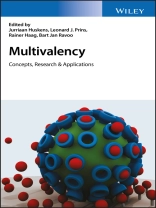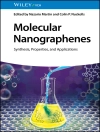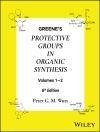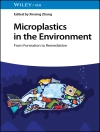Connects fundamental knowledge of multivalent interactions with current practice and state-of-the-art applications
Multivalency is a widespread phenomenon, with applications spanning supramolecular chemistry, materials chemistry, pharmaceutical chemistry and biochemistry. This advanced textbook provides students and junior scientists with an excellent introduction to the fundamentals of multivalent interactions, whilst expanding the knowledge of experienced researchers in the field.
Multivalency: Concepts, Research & Applications is divided into three parts. Part one provides background knowledge on various aspects of multivalency and cooperativity and presents practical methods for their study. Fundamental aspects such as thermodynamics, kinetics and the principle of effective molarity are described, and characterisation methods, experimental methodologies and data treatment methods are also discussed. Parts two and three provide an overview of current systems in which multivalency plays an important role in chemistry and biology, with a focus on the design rules, underlying chemistry and the fundamental principles of multivalency. The systems covered range from chemical/materials-based ones such as dendrimers and sensors, to biological systems including cell recognition and protein binding. Examples and case studies from biochemistry/bioorganic chemistry as well as synthetic systems feature throughout the book.
* Introduces students and young scientists to the field of multivalent interactions and assists experienced researchers utilising the methodologies in their work
* Features examples and case studies from biochemistry/bioorganic chemistry, as well as synthetic systems throughout the book
* Edited by leading experts in the field with contributions from established scientists
Multivalency: Concepts, Research & Applications is recommended for graduate students and junior scientists in supramolecular chemistry and related fields, looking for an introduction to multivalent interactions. It is also highly useful to experienced academics and scientists in industry working on research relating to multivalent and cooperative systems in supramolecular chemistry, organic chemistry, pharmaceutical chemistry, chemical biology, biochemistry, materials science and nanotechnology.
عن المؤلف
Jurriaan Huskens, Ph D (1968) is full professor of ‘Molecular Nanofabrication’ at the University of Twente, Netherlands. Present research interests encompass: supramolecular chemistry at interfaces, supramolecular materials, multivalency, nanofabrication, and solar fuels.
Leonard J. Prins, Ph D is a professor in Organic Chemistry at the University of Padova, Italy. His current research interests include network reactivity in complex chemical systems and the origin of cooperativity in multivalent catalysts.
Rainer Haag, Ph D joined the Freie Universität Berlin as full Professor of Organic and Macromolecular Chemistry in 2004. Currently he serves on the Editorial Board of the Angewandte Chemistry and is the spokesperson of the collaborative research center 765 on ‘multivalency.’
Bart Jan Ravoo, Ph D (1970) is full professor at the Westfälische Wilhelms-Universität Münster, Germany, where he is in charge of the ‘Synthesis of Nanoscale Systems’ group. Since 2016 he is co-director of the Center for Soft Nanoscience (So N). His main research interest are soft materials made by self-assembly, functional nanoparticles, and self-assembled monolayers.












